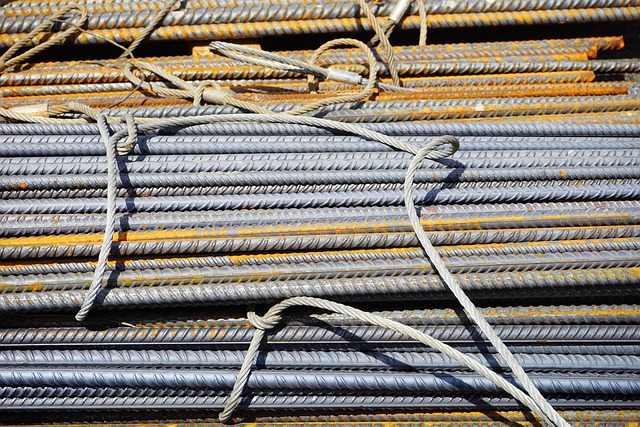Utility potholing services, particularly vacuum excavation (hydro excavation) methods, are essential for safe and efficient construction. These non-destructive techniques precisely locate buried utilities like water, gas, and electricity with minimal surface disruption, reducing damage risk to critical infrastructure. Vacuum excavation minimizes service disruptions, environmental impact, and soil disturbance, making it an eco-friendly choice. Best practices in utility potholing, including meticulous pre-planning, training, and safety adherence, ensure non-destructive utility line exposure, enhance efficiency, and contribute to reliable utility management.
In the realm of construction and maintenance, ensuring safety and precision is paramount. This is where utility potholing services come into play, serving as the foundation for secure and efficient operations. The article delves into the intricacies of professional utility potholing techniques, highlighting their role in accurate subsurface utility location. By exploring the advantages of vacuum excavation potholing as a non-destructive approach, it underscores the benefits for both safety and efficiency. Furthermore, it provides best practices for precise utility line exposure, ensuring safe potholing services across various construction and maintenance scenarios.
Understanding Utility Potholing Services: The Foundation of Safe Construction and Maintenance
Utility potholing services are an essential component of safe and efficient construction and maintenance projects. This non-destructive potholing technique involves using advanced vacuum excavation equipment to expose buried utility lines, such as water, gas, and electrical cables, with minimal disruption to the surface. By providing precise utility location, professionals can avoid damaging critical infrastructure during excavation, ensuring the safety of workers and the public.
In the world of construction and maintenance, professional utility potholing plays a pivotal role in navigating complex subsurface landscapes. Hydro excavation potholing, also known as vacuum excavation potholing, offers an accurate and controlled method to access and identify underground utilities. This allows for informed decision-making during excavation, reducing the risk of costly mistakes and potential safety hazards associated with hitting live lines or other essential services buried beneath the ground.
Professional Utility Potholing Techniques for Accurate Subsurface Utility Location
Professional Utility Potholing Techniques for Accurate Subsurface Utility Location
In the realm of construction and maintenance, precise utility location is paramount to avoid damaging critical underground infrastructure during excavation. One of the most advanced and safe potholing services available is vacuum excavation potholing, also known as hydro excavation potholing. This non-destructive potholing technique employs a powerful vacuum to expose buried utility lines, providing clear and accurate images of their locations. By utilizing this method, professionals can map out underground utilities with remarkable precision, ensuring safe and effective excavation.
Vacuum excavation is an environmentally friendly approach that minimizes the risk of service disruptions and damage to vital infrastructure. Unlike traditional methods, which can be invasive and potentially destructive, vacuum excavation potholing offers a gentle alternative. It allows contractors to quickly expose utility lines without trenching or disturbing surrounding soil, making it an indispensable tool for professional utility potholing services. With this technique, precise utility location is not just possible; it becomes the standard practice in modern construction and maintenance projects.
Benefits of Vacuum Excavation Potholing: A Non-Destructive Approach
Vacuum excavation potholing offers significant advantages over traditional methods when it comes to accessing and verifying utilities during construction and maintenance projects. As a non-destructive approach, it ensures that critical underground infrastructure remains intact, minimizing damage and potential disruptions. This method employs powerful vacuums to suction soil and debris, creating a precise hole around the target utility line or manhole.
By utilizing hydro excavation potholing techniques, professionals can accurately expose and locate subsurface utilities, allowing for safe potholing services. This precision is invaluable in avoiding damage to water, gas, electrical, and telecommunications lines. Moreover, it enables utility line exposure without the risk of striking unseen utilities, reducing the likelihood of costly accidents and service interruptions. Thus, professional utility potholing services leveraging vacuum excavation provide a safer, more efficient, and environmentally friendly alternative for construction and maintenance operations.
Ensuring Safety and Efficiency: Best Practices for Precise Utility Line Exposure during Potholing Operations
Ensuring Safety and Efficiency through Best Practices in Utility Potholing
When it comes to construction and maintenance projects, utility potholing services play a crucial role in safely and effectively exposing underground utility lines. Professional utility potholing techniques, such as vacuum excavation potholing or hydro excavation potholing, offer non-destructive solutions for precise utility line exposure. These methods utilize specialized equipment to create a tunnel around the target utility, allowing access without damaging surrounding infrastructure.
Adhering to best practices is essential for safe potholing services. This includes thorough pre-planning to identify and mark underground lines, ensuring proper personnel training, and implementing safety protocols at every stage of the process. By prioritizing these measures, construction teams can minimize risks, enhance efficiency, and contribute to a smoother, more reliable utility management process.
Precision utility verification through advanced potholing techniques, such as vacuum excavation, is paramount for ensuring safe and efficient construction and maintenance. Professional utility potholing services provide accurate subsurface utility location, minimizing damage to existing infrastructure. By adopting best practices for utility line exposure, the industry can promote non-destructive potholing methods that offer benefits like reduced costs, faster completion times, and minimal environmental impact. Integrating these strategies is key to enhancing safety and fostering a more sustainable approach to construction projects.
